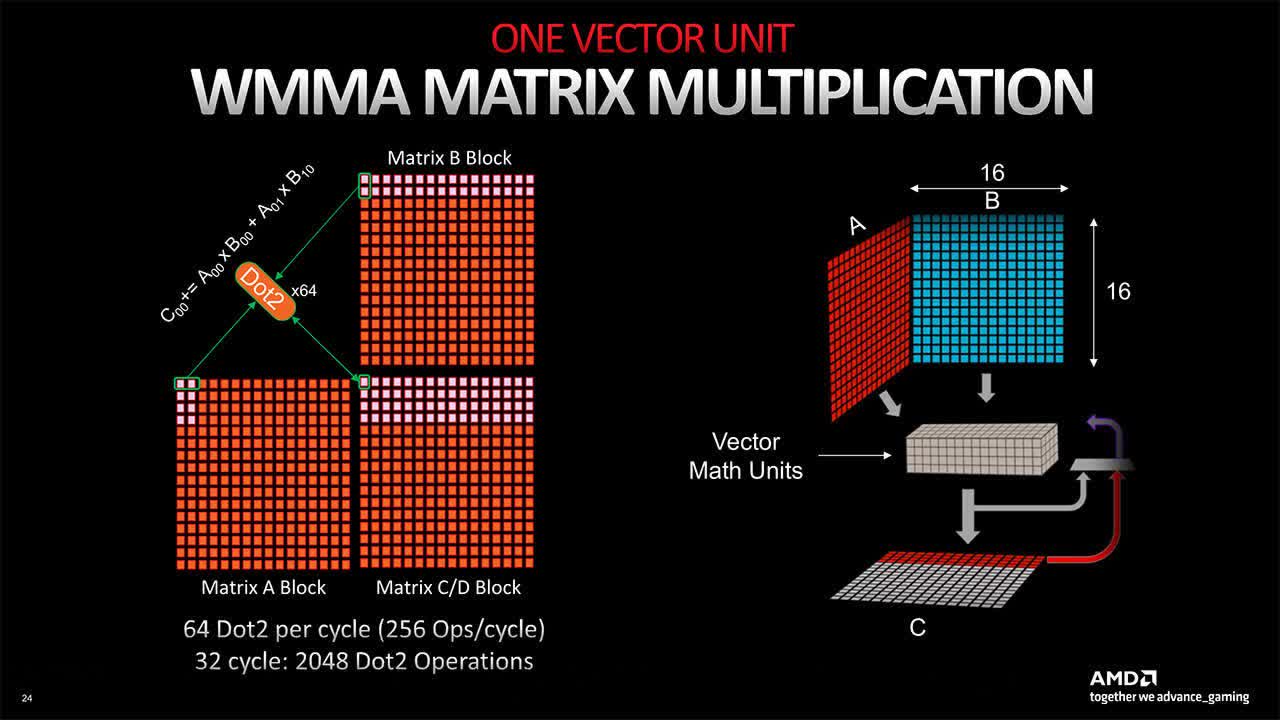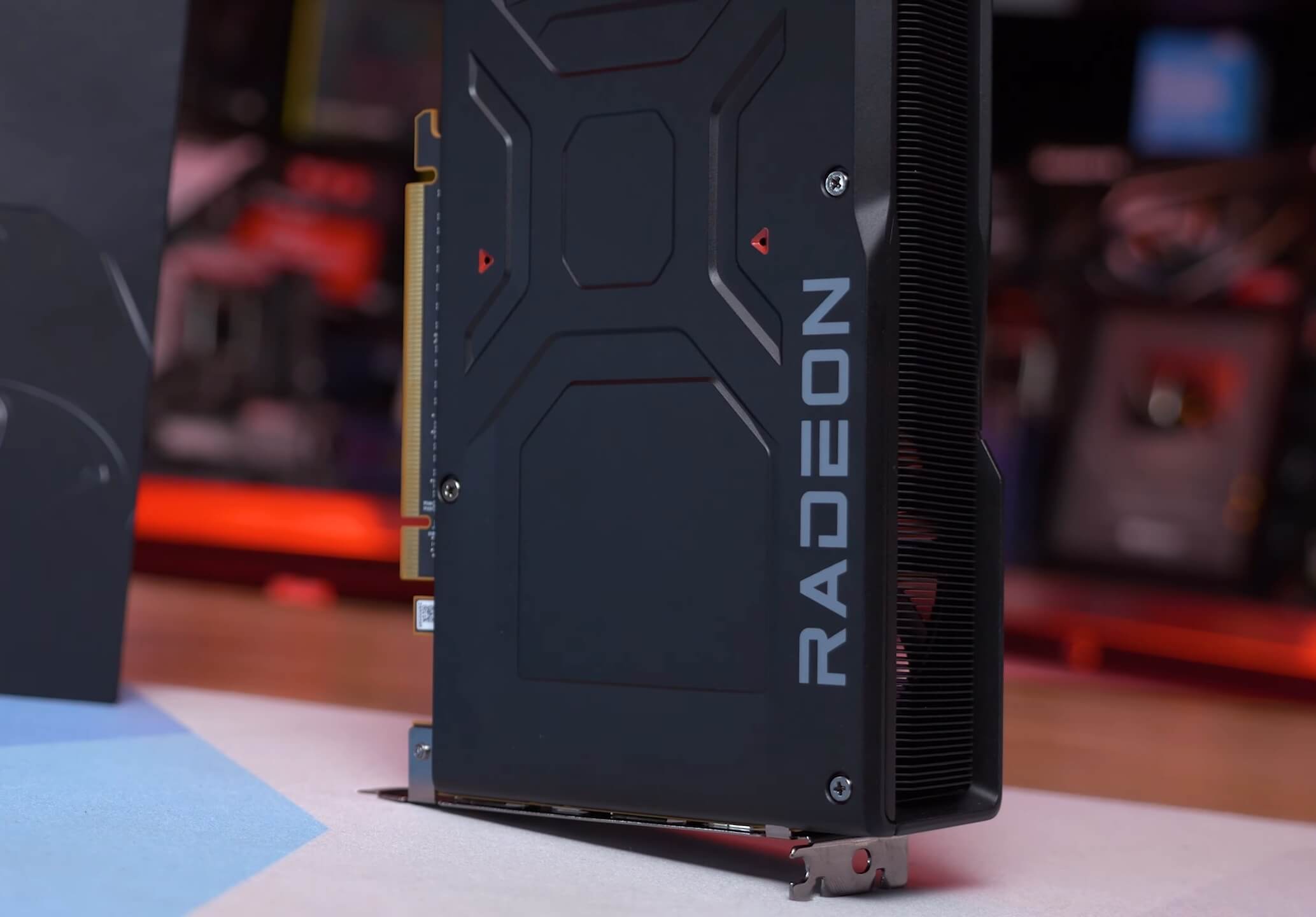In context: Team Red revealed its AI acceleration hardware alongside the Radeon RX 7000 graphics cards in December but didn't say much about what it plans to do with them - at least not in English. Japanese outlet 4Gamer spoke with AMD about how its AI ambitions differ from Nvidia's.
In a recently-published interview, senior figures from AMD expressed interest in AI applications in graphics cards that go beyond image reconstruction, which Nvidia made popular. The machine-translated comments mark the first time the company has talked at length on the subject since unveiling its first GPUs incorporating AI accelerators late last year.
Nvidia constantly boasts about its DLSS technology which relies on the RTX graphics card's tensor cores to improve image quality and performance through machine learning. Team Red's counterpart, FSR, strives toward the same goal without hardware-based acceleration, making it available on more GPUs but potentially less effective depending on the situation.
When AMD revealed and launched the RX 7900 XT and 7900 XTX with AI accelerators in December, onlookers assumed they were the company's answer to Team Green's tensor cores. That may be the case, but AMD doesn't want to stop there.

David Wang, senior vice president of engineering at Radeon Technologies, suggested using AI acceleration to improve the AI and movement of NPCs in games. He also said AI could accelerate the graphics pipeline through neural techniques, mentioning Stable Diffusion among other technologies.
Wang said AMD wants to ensure the AI acceleration in its gaming GPUs primarily focuses on improving the gaming experience. His comments contrast Team Red's vision with Team Green's various non-gaming applications that use tensor cores.
Nvidia has unveiled RTX-exclusive AI functions like noise canceling, simulating eye contact on video, and upscaling web videos. Wang indicated that some of these applications don't necessarily require AI and that Nvidia uses them to promote its proprietary technology. Wang doesn't criticize Nvidia's stance but suggests customers might be paying for features they never use.
Wang's interview also covers subjects like the transition from primitive to mesh shaders. The company is also researching technology that could change the relationship between the CPU and GPU when drawing graphics.
